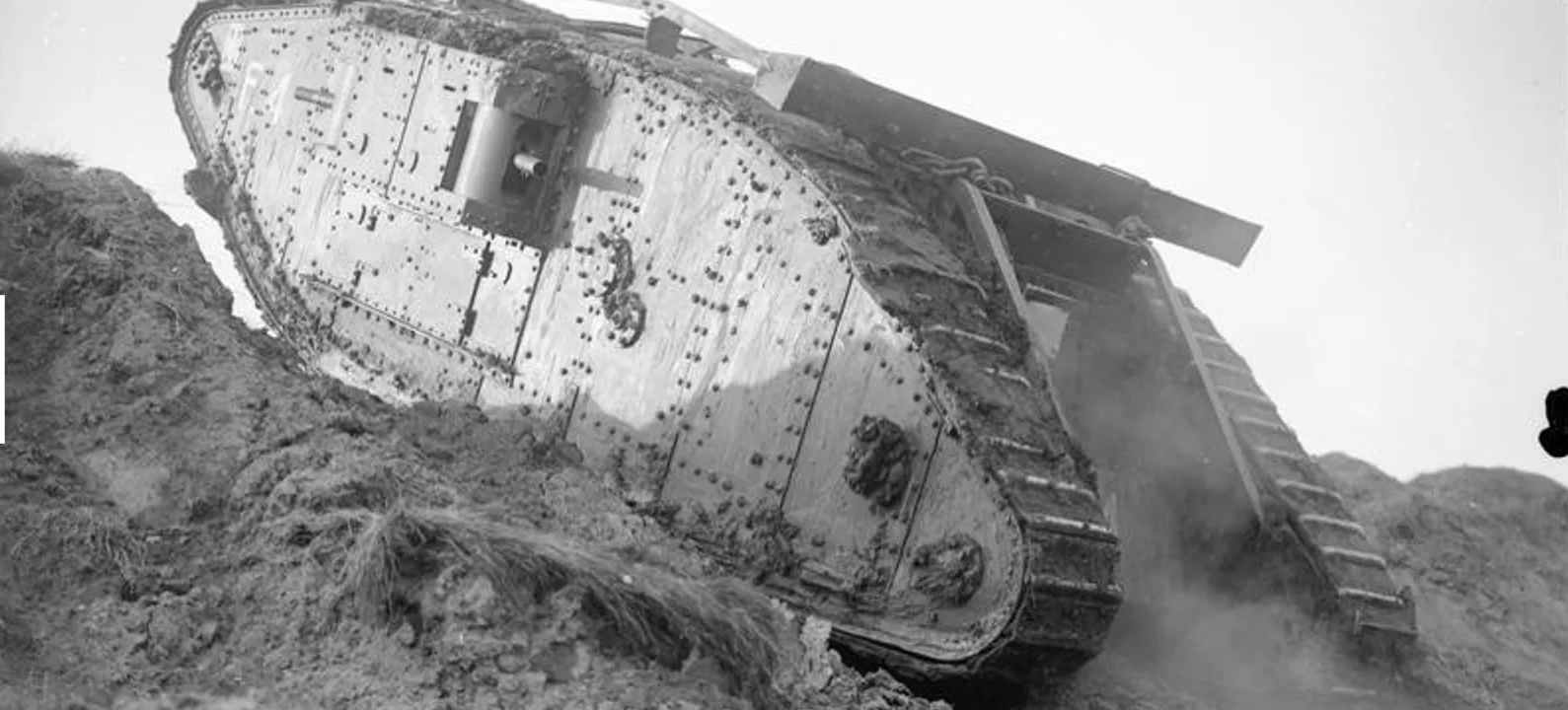The Day British Tanks Changed Warfare Forever - National Geographic
It's almost exactly a century since the first ever mass tank attack, at the Battle of Cambrai on November 20th 1917, saw a British innovation, inspired by farm machinery, trigger a new era of military strategy. By Mark Bailey PHOTOGRAPH BY IWM
At 6.20am on November 20th 1917, close to the town of Cambrai in northern France, the British Army launched into battle the first mass wave of tanks in military history. With the First World War locked in a stalemate through trench warfare, 476 British Mark IV tanks surged across German lines with devastating results. The 28-tonne tanks hauled away barbed wire with grapnel hooks, dropped fascines (bundles of brushwood) to bridge trenches, neutralised the enemy with six-pounder and Lewis guns, and shielded the infantry following behind.
At 9am the breach in the Hindenburg Line of German defences was five miles wide. By nightfall British troops had captured 4,000 prisoners. The pioneering deployment of a mass swarm of these mechanised monsters was viewed as such a decisive breakthrough that church bells rang out across London in celebration.
This was not the first time tanks had entered the war. A much smaller unit of 32 Mark I tanks were used at the Battle of Flers-Courcelette on September 15th 1916. However, they were mechanically unreliable and had weak armour, resulting in only nine making it across German lines. The viability of tanks remained unclear.
Nor was the first-day success at Cambrai sustained. A German counter-attack on November 30th regained much of their lost territory, and with a final total of 44,000 British and 51,000 German casualties, the battle ended on December 7th in what the historian David Stevenson claims was “at best a draw.”
But the true significance of the Battle of Cambrai is that it confirmed the brutal potential of a mass deployment of tanks. The events shaped the Allies’ strategy for the Hundred Day Offensive of 1918, which featured mass tank attacks in key conflicts such as the Battle of Amiens on August 8th, helping to bring an end to the war.
Tanks were developed by the ‘Landships Committee’, a collection of military, naval and engineering experts brought together by the Lord of the Admiralty, Winston Churchill, on February 20th 1915. Mechanical engineer Major Walter Gordon Wilson and agricultural machinery expert William Tritton worked on a prototype ‘landship’ which could cross trenches, using ideas drawn from innovations in farm machinery. The use of caterpillar tracks combined with a rhomboid shape capable of navigating uneven terrain formed the basis of a striking new military tool. To ensure secrecy, workers were told they were building water tanks destined for Mesopotamia – which led to the colloquial name ‘tank.’
Although the original Mark I tanks were ineffective, the Mark IV used at Cambrai featured better protected fuel tanks, thicker armour and more powerful engines. Launched in mass waves, they now had the potential to destroy, demoralise and disorganise the enemy. The historian Sir Basil Henry Liddell Hart called their arrival during the First World War “one of the landmarks in the history of warfare.”
The legacy of the Battle of Cambrai continues to influence warfare today. Tank battles have marked key turning points in conflicts from the Second World War of 1939-45 to the Indo-Pakistani War of 1965 and the Iraq War of 2003 and there are now almost 100,000 tanks available to military forces worldwide.
(C) National Geographic
Link: https://www.nationalgeographic.co.uk/history-and-civilisation/2017/11/the-day-british-tanks-changed-warfare-forever
